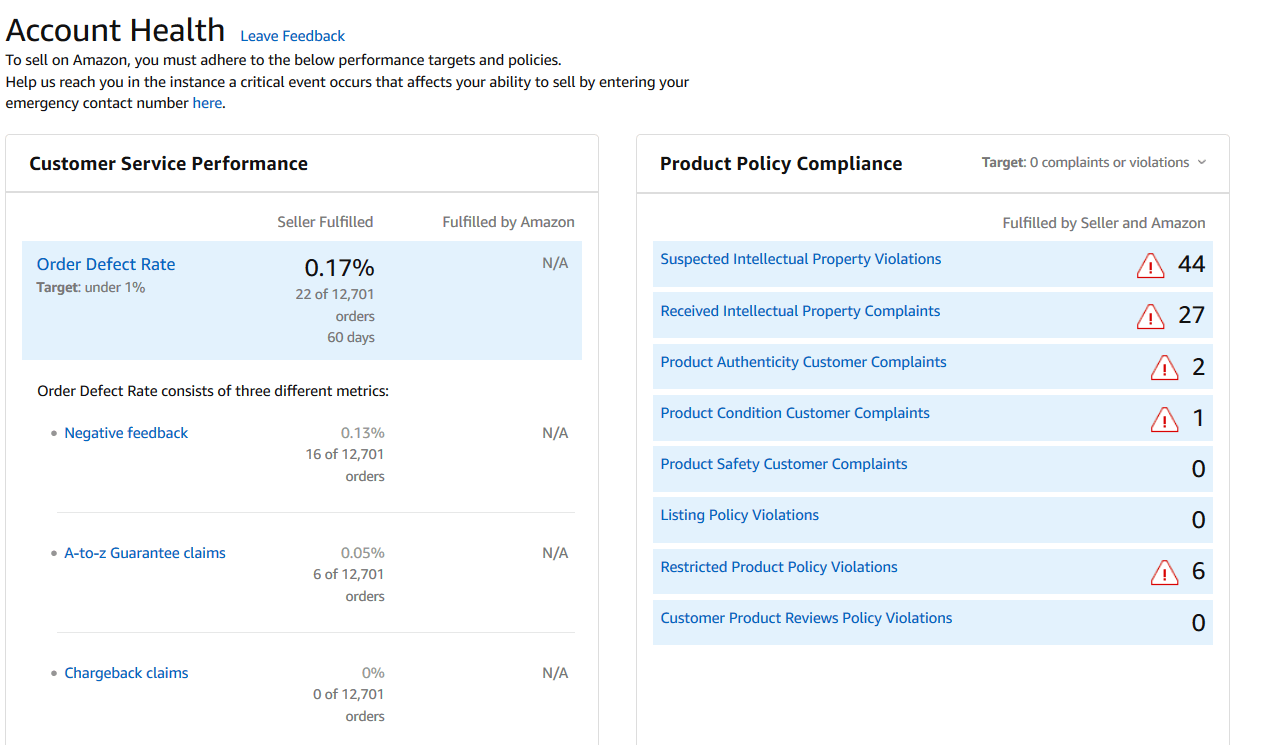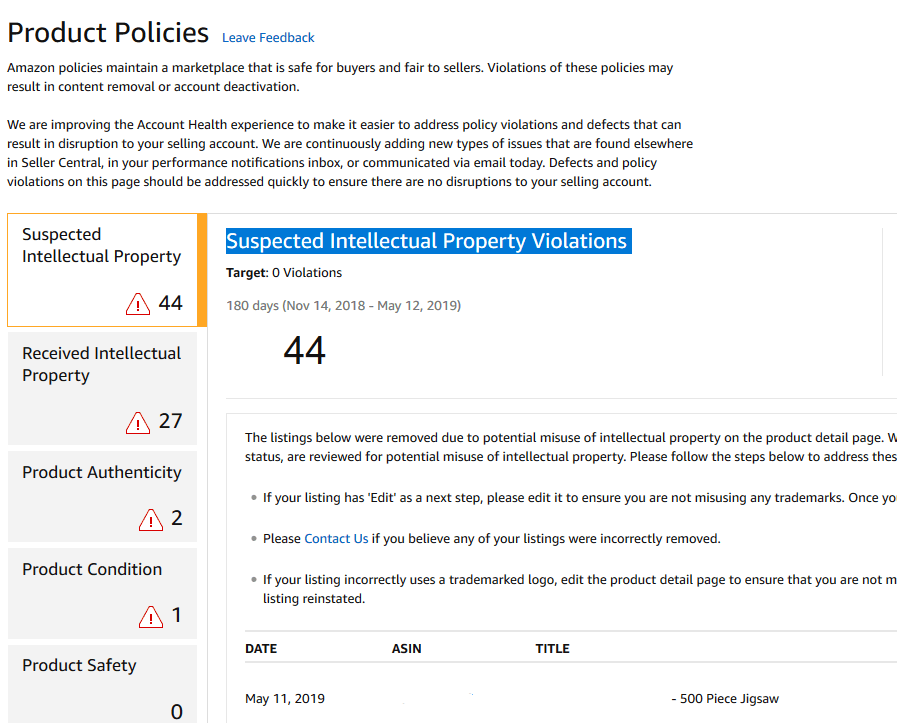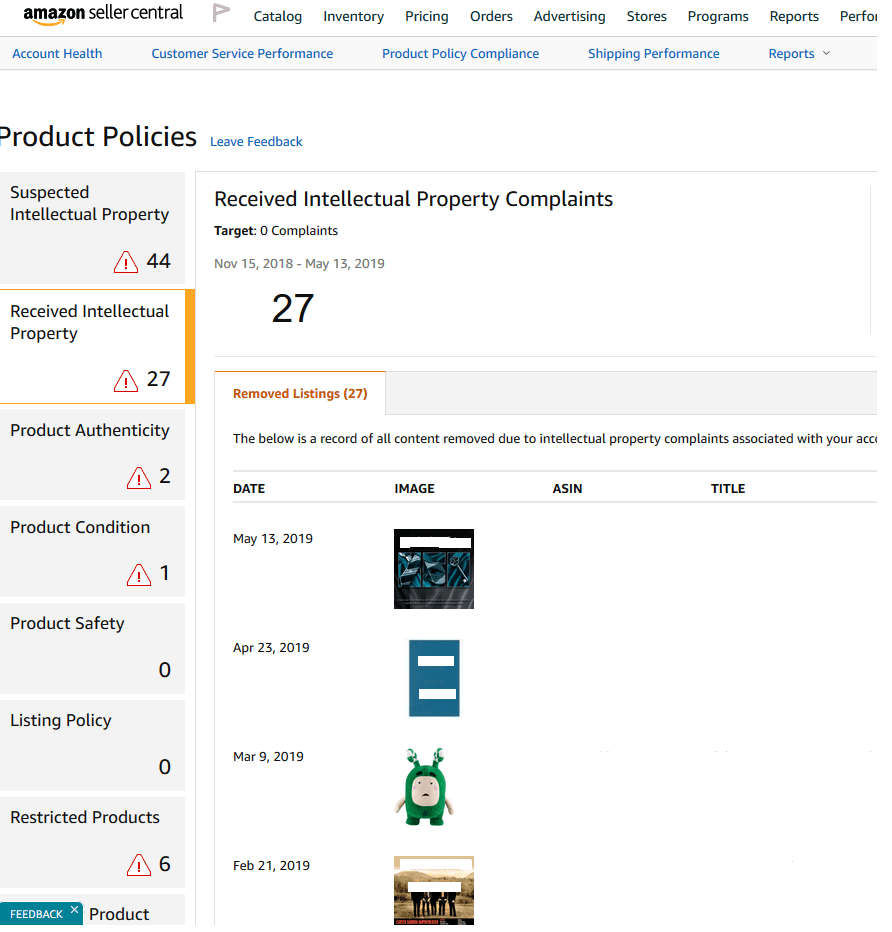There’s a new Amazon Dashboard in town, and it’s all about IP violations. If you thought Intellectual Property on Amazon is a minefield, read this and stop walking on eggshells.
Just when you thought Seller Central was all out of surprises, there’s a new kind of Amazon dashboard in Account Health. It’s called ‘‘Suspected Intellectual Property Violations’’. A tongue-twister, isn’t it? Let’s call it SIPV for short. And let’s see what it’s all about.
SIPV. The Basics
From the looks of things, there’s a lot riding on this Amazon dashboard. But the way sellers handle potential IP violations may need to change.
Amazon flags up listings for ‘misuse of trademarked terms’. Phrases like ‘‘X speaker compatible’’ usually trigger it.
It doesn’t matter if you use the brand in titles, descriptions, or even keywords. As long as you refer to a different brand, you’re breaking the rules.
Amazon deactivates these listings and sends an email with examples of fair use phrases (‘‘compatible with’’, ‘‘works with’’, or ‘‘for’’). It also tells you you’re free to correct the listings when you like for reinstatement within 24 hours.
So, as soon as you get that email, you start sifting through your listings to see where you mentioned that brand. And if you found it, you’d edit every affected listing right away.
Say, for instance, they flagged up a Disney toy you listed with the word ‘Hasbro’ in the title. If you have the invoices to back it up, you can replace ‘Hasbro’ with ‘Disney’, even though Disney is a gated brand.
But recent reports show many email notifications go missing. Sometimes a trademark issue crops up in the dashboard with no prior notice, and it can be something you listed months ago.
So, because Amazon now feeds potential trademark issues straight into the SIPV dashboard and sometimes skips the notification part, you could be caught off-guard.
For private label items, it’s very easy for merchants to act on the problem. If they mistakenly used a brand name in one of their listings, they can easily do a search in their inventory with the same brand name to see where else they made the same mistake (knowing that they exclusively sell their own brand).
The rest of the sellers can carry out the same search, of course. But since the issue occurs at item level, it’s very likely that only one or a couple of listings have the same brand issue, whereas all the rest by the same brand would be correct.
Luckily, the listings featured there can no longer affect your accounts, because they’ve been closed. But here’s why you should keep an eye out anyway:
Suspected Vs. Received IP Violations
Suspected Intellectual Property Violations and Received Intellectual Property Complaints are two different things. As such, they feature in two separate tabs. Here’s why:
- The SIPV tab displays ASINs that Amazon suspects may be violating a brand’s intellectual property. These are inactive listings. They stay that way until you edit them.
- The RIPC tab shows listings reported to Amazon by rights owners. In most cases, Amazon will keep sending performance notifications about them, letting sellers know what to do.
So, to keep up with IP issues, you need to check both Amazon dashboards regularly. But that may not be enough. Based on our experience handling sellers’ cases, SIPV isn’t all it’s cracked up to be.
IP Violations Dashboard: Dud or Doozy?
It’s only been around for a few weeks. Some sellers have access to it; some don’t. For those who do, it cropped up and then disappeared again several times. Sure; we can put that down to IT glitches. But those weren’t the only teething troubles.
We’ve dealt with quite a few strange situations since SIPV came along. We came across cases featured in this Amazon dashboard where:
- The listings were fair use to begin with (e.g. title said ‘compatible with’);
- The ‘trademarked term’ was precisely the brand the seller had in stock;
- The ASINs were never even listed by the seller and Amazon refused to retract them.
Reactions to the SIPV Dashboard
Amazon urged sellers to review the Trademark section on the Intellectual Property Policy help page. And to contact them if necessary. But the advice is generic and it doesn’t address the big issues.
Suppose you mentioned a brand in your listing. You’d like to change the name of the brand, but you find out it’s gated. Without invoices to back you up, you’d start wondering if it’s even worth going through the trouble to list on Amazon.
Let’s also assume Amazon’s flagged up a product. But you have countless others from the same brand in your warehouse. You probably won’t blacklist the whole brand, because this mistake is on an item-by-item basis. But do you bother to look for the mistake and reinstate your listings? Or do you give up on them altogether, since Amazon says they don’t jeopardize your business?
These are just some of the issues sellers might have with this Amazon dashboard. If you’ve come across a strange situation since the Suspected Intellectual Property Violations was launched, we’d love to hear from you. Please share your thoughts and don’t forget to follow our blog for more news and reports on IP violation rules.
Melanie takes an active interest in all things Amazon. She keeps an eye on the latest developments and keeps Amazon sellers up to speed
The post New Amazon Dashboard: Suspected Intellectual Property Violations appeared first on SellerEngine.
from RSSMix.com Mix ID 8319533 http://bit.ly/2W1WyFW





0 Reviews:
Post a Comment